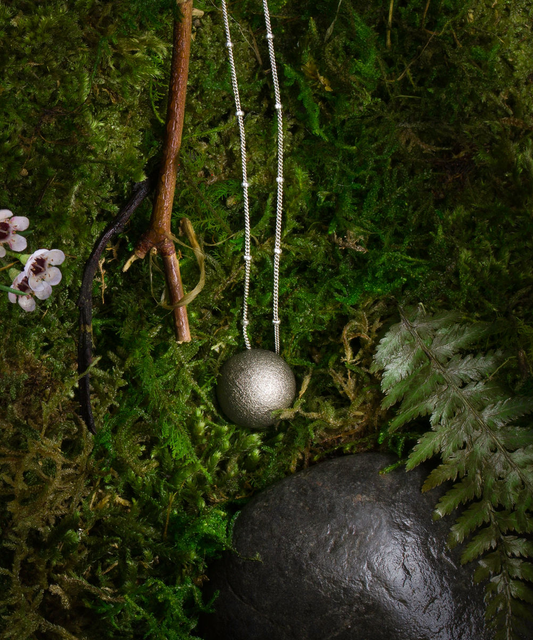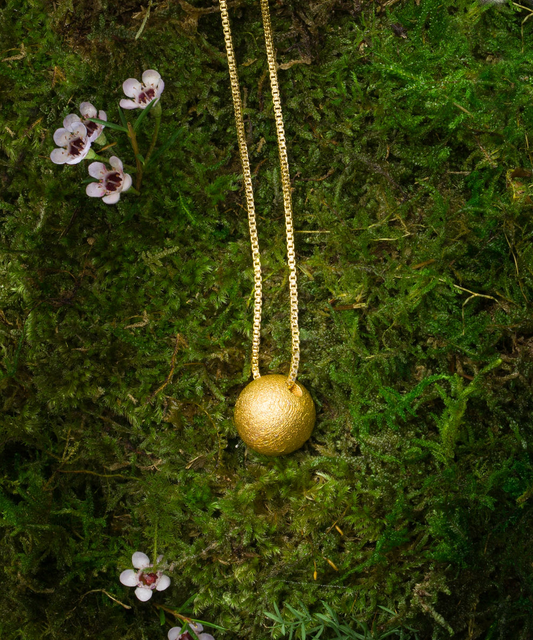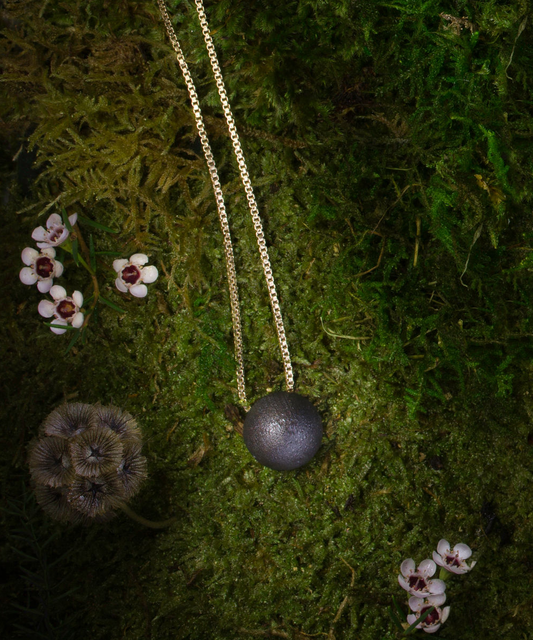Throughout time, humanity has sought refuge, inspiration, and resilience in symbols that stand as unwavering reminders and potent instruments on our journeys. So, what are some of these symbols, and what can they represent in our daily lives?
From ancient Celtic culture to modern-day tattoos, these symbols provide a window into our inner beauty and the value of self-worth. I'll admit that this list is skewed with Celtic/Irish symbolism, but given I'm half-Irish, I come by it honestly! So, as we explore their different meanings, we aim to understand the messages they convey through their unique qualities, guiding us toward tools for inner peace, self-confidence, and, above all, self-love.
The Claddagh Ring: A Symbol of Self-Love and Everlasting Connection
A staple in Irish culture, the Claddagh ring is a timeless emblem that transcends mere jewelry; it encapsulates the profound essence of self-love and eternal connection. This iconic ring is more than just an accessory; it is a constant reminder of the values that define relationships, both with others and with oneself.
Origin and Symbolism
The Claddagh ring has captured hearts and sparked fascination for centuries as a strong symbol of love. But what is it about this ring that makes it more than just an accessory?
The Claddagh ring's name is derived from the Irish word "Cladach," meaning "shore." Its origin can be traced back to the small fishing village of Claddagh in Galway, Ireland, where it first emerged in the early 17th century. It was a goldsmith from this picturesque coastal village named Richard Joyce, who was believed to have crafted the first Claddagh ring.
The story goes that Richard while traveling to the West Indies, was captured by pirates and sold into slavery. During his years of captivity, he honed his skills as a goldsmith, and it was during this time that he crafted the first Claddagh ring. When he eventually regained his freedom, he returned to Claddagh to find his love had waited for him all those years. He presented her with the ring he had crafted, symbolizing their romantic love and commitment.
Self-Love and the Claddagh Ring
The Claddagh ring, extending beyond its cultural significance, has garnered global recognition as a symbol of self-love. When you adorn this ring, it can act as a perpetual prompt that self-love forms the bedrock upon which all other manifestations of love thrive.
Everlasting Connection
One of the most captivating aspects of the Claddagh ring is how it signifies the status of the wearer's heart. When worn on the left hand with the heart facing outward, it signifies that the wearer is engaged. When worn on the left hand with the heart facing inward, it signifies that the wearer's heart is in a committed relationship such as marriage. And when worn on the right hand with the heart facing outward, it symbolizes that the wearer's heart is not yet taken, but turned inward, it means they are in a relationship.
The Oak Tree: Finding Inner Strength and Spiritual Growth in Nature
Within the intricate tapestry of symbolism, the majestic oak tree emerges as a testament to the profound interplay between inner strength, spiritual growth, and the wonders of the natural world.
Origin and Symbolism
Celebrated in cultures spanning the globe for its enduring longevity and physical resilience, the symbolism of the oak tree surpasses mere botanical significance. It encapsulates a reservoir of wisdom, offering solace and inspiration to those in search of inner fortitude and spiritual transformation.
Across history, the oak has forged profound connections with deities, gracing the narratives of diverse mythologies. The oak tree's deep roots mirror the inner strength required to weather life's storms, and its expansive branches reach toward the heavens, connecting earthly existence with the spiritual realm. In this great way, the oak tree serves as a bridge, linking the terrestrial with the celestial.
Inner Strength and the Oak Tree
The symbolism of the oak tree serves as a powerful reminder of the inner strength that resides within each of us. Just as the oak stands firm during the fiercest of winds, we too can find strength in adversity. It teaches us that, like its roots, our inner fortitude can run deep, anchoring us in our convictions and values, even in difficult times. The oak tree encourages us to tap into our inner reservoirs of strength, empowering us to confront life's challenges with unwavering determination.
Soul Spheres: Reminding You That You Are More Than The Physical
Although they've only been around for the past ten years and only recently available to the public, Soul Spheres have time and again served to provide me with a physical reminder that we are beyond the physical. Based on the theory that the Soul weighs 21 grams, the spherical pendants approximately weigh just that amount.
Origin and Symbolism
In the early 1900s, Dr. Duncan MacDougall theorized that the Soul had weight and sought to prove his theory by weighing people (bed and all) as they neared death. The patients lost an average of 21 grams, and he concluded that this must be the weight of the Soul. Although the research wouldn't be considered sound in modern times, this concept of being able to physically represent something quite beyond our physical realm fascinated me as an artist, and I created these pendants as part of my BFA thesis in 2013.
Soul Spheres: Symbols to Take Care of and Be Good to Our Selves
Wearing my Soul Sphere over the past decade has been a constant reminder to me that I am more than this physical being. It's emblematic of my connection with my Self, that inner piece that needs just as much attention as my body. When we see beyond our physical limitations, we are faced with our limitless selves, able to accomplish anything when we root in self-love and appreciation of the connectedness of us all.
Butterfly Tattoos and Red Roses: Modern Self-Care Rituals Through Tattoos
In the realm of contemporary self-care and self-expression, tattoos have emerged as powerful tools for conveying personal narratives and nurturing self-love. Two motifs, in particular, have gained significant popularity for their profound symbolism and the self-care rituals they represent: butterfly tattoos and red roses. Let's delve into how these inked adornments have become conduits for self-love and self-care in modern times.
Origin and Symbolism
Butterfly tattoos are in high demand due to their rich symbolism of transformation and personal growth. These delicate creatures undergo a metamorphic journey, transitioning from a humble caterpillar to a stunning butterfly, mirroring our own capacity for change, self-improvement, and self-love. Choosing a butterfly tattoo signifies an individual's embrace of personal transformation and the ongoing journey toward self-love.
It serves as a perpetual reminder that personal growth and self-acceptance are continuous endeavors, much like the various stages of a butterfly's life. This graceful creature, permanently etched on one's skin, becomes both a visual and emotional testament to one's capacity to emerge from challenges as a more vibrant and self-affirming version of oneself.
Red Roses: Symbols of Self-Care and Self-Appreciation
The red rose, traditionally associated with love and passion, has found a unique role in modern self-care practices. When inked as a tattoo, it becomes a potent symbol of self-appreciation, emphasizing the importance of self-nurturing, kindness, and self-care. Much like tending to a precious garden flower, this act underscores the importance of self-love.
Furthermore, the red rose serves as a constant reminder of the potency of self-love and the value of setting personal boundaries. It embodies the concept that, akin to the thorns that protect the rose, one can establish boundaries to safeguard one's own well-being and mental health. Opting for a red rose tattoo becomes a self-affirming commitment to prioritize self-care and self-love, fostering a sense of inner equilibrium and emotional well-being.
Tattoos as Modern Self-Care Rituals
In recent years, tattoos have evolved beyond mere body art, transcending into personalized forms of self-care and self-expression. The process of choosing a design, reflecting on its significance, and enduring the tattooing experience itself can be a deeply cathartic and empowering journey. It enables individuals to reclaim agency over their bodies and lives, fostering a profound sense of self-love and self-empowerment.
The Celtic Cross: Embracing Unconditional Love and Deep Self-Worth in Ancient Symbols
The Celtic Cross, a revered and iconic symbol rooted in the ancient times of the Celtic people, carries profound messages of unconditional love and deep self-worth. This symbol, known for its intricate design and rich history from Celtic origins, serves as a powerful reminder of our capacity to love unconditionally and the importance of recognizing our inherent self-worth.
Origin and Symbolism
The Celtic Cross, also known as the High Cross in the conventional Celtic tradition, has its origins in the early days of Celtic Christianity, with roots stretching back to the 8th century. This distinctive cross features a circle that intersects with the arms of the cross, creating a harmonious blend of Christian and Celtic symbolism. The circle is often interpreted as a representation of eternity and the unending cycle of life.
Unconditional Love and the Celtic Cross
At its core, the Celtic Cross is a symbol of unconditional love. The circle enveloping the cross's intersection signifies an unbroken, eternal love. This symbolism encourages us to embrace the concept of love that transcends conditions and limitations, reminding us that love should be given freely and without expectations. It invites us to cultivate love in its purest form, whether directed toward others or, perhaps more importantly, towards ourselves.
Deep Self-Worth and the Celtic Cross
In addition to its message of love, the Celtic Cross holds a profound lesson in self-worth. The cross's design symbolizes the importance of recognizing and cherishing our own worthiness. Just as the circle encompasses the cross, we too are encircled by our own intrinsic value. Embracing the Celtic Cross can serve as a daily affirmation of our self-worth, reinforcing the idea that we deserve love, respect, and acceptance from ourselves and others.
Modern Interpretations and Personal Growth
In recent years, the Celtic Cross has transcended its historical and religious origins to become a symbol of personal growth and self-discovery. Individuals from various backgrounds choose to adorn themselves with this intricate design as a testament to their commitment to unconditional love and self-worth. The act of wearing or displaying the Celtic Cross becomes a continuous reminder of these principles in one's life, a constant source of inspiration and strength.
The Lotus Flower and Maple Leaf: Ancient Symbols of Inner Beauty and Personal Growth
In the realm of symbolism, the lotus flower and the maple leaf stand as timeless icons, each carrying profound messages of inner beauty and personal growth. Originating from distinct corners of the world, these natural wonders have captured human imagination for centuries, serving as powerful reminders of our potential for transformation, resilience, and the pursuit of inner harmony.
Lotus Flower: A Symbol of Inner Beauty
The lotus flower, originating in ancient Egypt and India, is a symbol of unparalleled beauty - transcending its physical form. Rising from the muddy depths of ponds and rivers, it blossoms into a glorious flower, demonstrating the capacity for inner beauty to emerge from life's murkiest waters. In various Eastern cultures, the lotus represents enlightenment, purity, and spiritual growth, highlighting our ability to rise above adversity and reveal inner beauty.
The lotus flower's journey from darkness to light mirrors our path of personal growth. Overcoming environmental challenges, much like us facing life's obstacles, the lotus teaches that even in adverse conditions, we can flourish and radiate beauty.
Maple Leaf: A Symbol of Personal Growth
Deeply rooted in North American and Canadian landscapes, the humble maple leaf symbolizes personal growth through annual transformation. As seasons change, maple leaves transition from vibrant green in spring and summer to fiery hues in fall before ultimately falling to the ground in a cycle of renewal. This cyclical transformation signifies the inevitability of change and the importance of adaptation in our personal growth journey.
The maple leaf reminds us that personal growth is an ongoing process marked by change and adaptation. Similar to the leaf's phases, we can embrace the diverse stages of our lives, letting go of what no longer serves us and welcoming new experiences and growth opportunities. This natural symbol offers strength in navigating life's changes with grace and resilience.
Celtic Knots: Trinity Knot and Dara Knot for Self-Love and Protection
These timeless, ancient Celtic symbols, characterized by their continuous lines and intricate designs, hold deep significance and carry powerful messages of self-love and protection. Let's explore the secrets of these knots and how they can be tools for nurturing self-love and safeguarding inner strength.
Trinity Knot: Symbol of Unity and Self-Love
The Trinity Knot, also known as the Triquetra, is an ancient Celtic symbol with roots dating back to the ancient Celts. Comprised of three interlocking loops, it traditionally symbolizes earth, water, and air in Celtic mythology. However, the Trinity Knot is famously associated with its Christian interpretation, representing the Holy Trinity: the Father, the Son, and the Holy Spirit.
In the context of self-love, the Trinity Knot's symbolism can be transformative. It reminds us of the interconnectedness of our physical, emotional, and spiritual aspects, mirroring the way the loops interweave. Embracing all dimensions of our being, as the Trinity Knot unifies its loops, is an empowering act of self-love.
It encourages us to recognize and appreciate the multifaceted nature of our existence, nurturing a deep sense of unity and self-acceptance.
Dara Knot: Symbol of Strength and Protection
The Dara Knot derives its name from the Irish word "dara," meaning "oak tree." This knot's design features four interconnected corners, evoking the image of the mighty oak tree and its deep roots. The oak tree, revered for its strength and resilience, is a symbol of great endurance.
The Dara Knot stands as a powerful symbol of inner strength and protection. Much like the oak tree's steadfastness in the face of adversity, it's a reminder that we can draw upon our inner fortitude to overcome life's challenges. This knot serves as a protective shield, guarding against negativity and self-doubt while reinforcing our self-worth and inner power.
By wearing or meditating upon the Dara Knot, we invoke the strength of the oak tree as a source of inspiration and protection on our journey to self-love.
Embracing the Symbols: Guiding Us on a Path of Self-Love and Growth
We've ventured into a captivating realm of ancient and contemporary symbols, each carrying profound messages of self-love, inner strength, and personal growth.
At the end of the day, as we embrace the wisdom intricately woven into these symbols, our journey of self-discovery and personal growth unfolds.
As we integrate the wisdom encapsulated in these symbols, our journey unfolds, revealing the tangible realities of self-love and inner strength. These messages, etched in ink on our skin or engraved deep within our hearts, become powerful reminders to nurture and celebrate these aspects of our lives.
At Soul Spheres, we understand the significance of symbols in shaping personal narratives. Our bespoke spheres encapsulate the essence of these profound messages. Explore our collection and embark on your own journey of self-discovery with symbols that resonate with the core of who you are.




